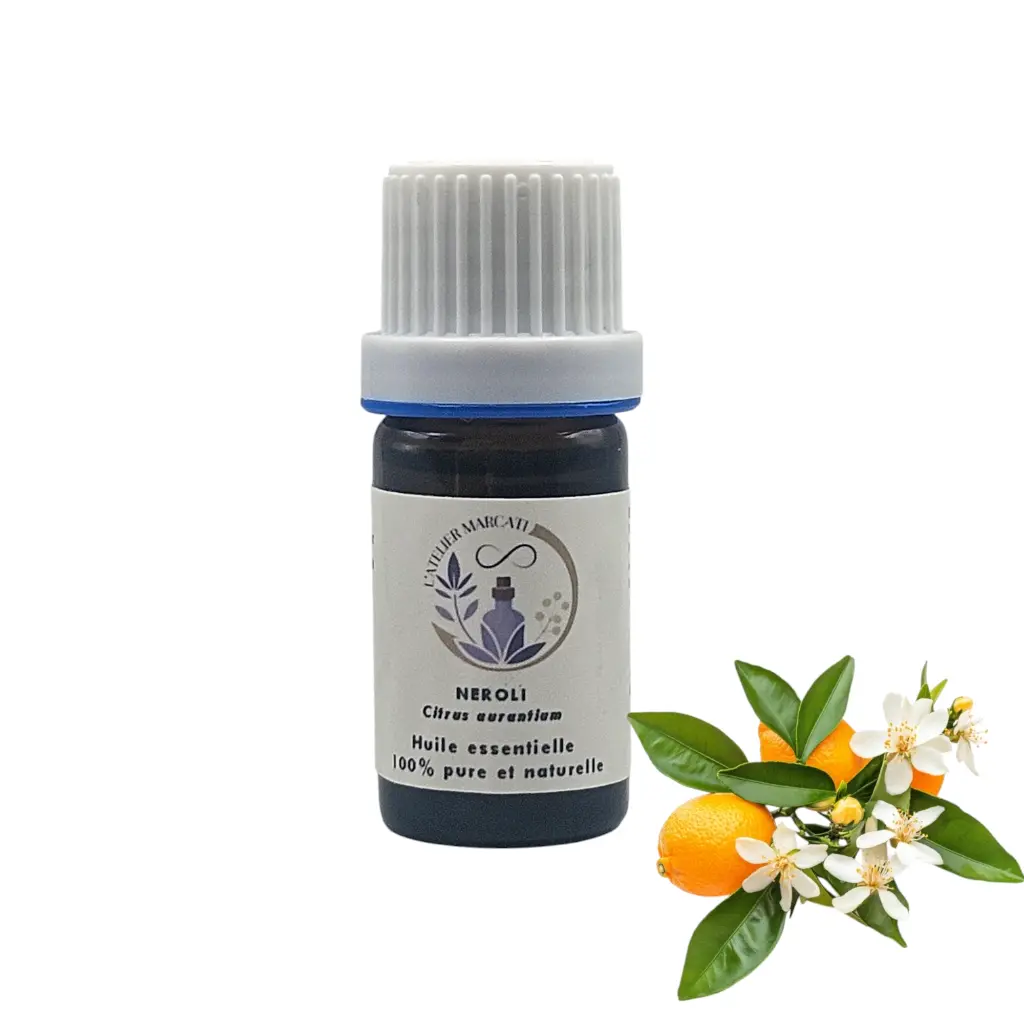Neroli essential oil
Botanical name: Citrus aurantium

Chemotype and indications
Identity card
Name : Neroli
Botanical name: Citrus Aurantium
Distilled part: Flower
Botanical family: Rutaceae
Origin: Morocco
Chemical composition
- Aldehydes: Benzaldehydes
- Ketones: Jasmone
- Nitrogen Compounds
- Esters (6 to 21%): Geranyl Acetate, Linalyl Acetate (5 to 7%), Neryl Acetate (3%)
- Monoterpenes: (35%): Alpha and Beta Pinene (18%), Limonene (11.45%)
- Monoterpenols (40%): Alpha Terpineol (2 to 4%), Geraniol (2.5%), Linalool (30 to 32%), Nerol
- Sesquiterpenols: Trans Nerolidol (3.5 to 6%)
Physical properties and therapeutic indications
- Childbirth (supports tone)*
- Anti-infective
- Anti-wrinkle
- Aphrodisiac
- Bronchitis*
- Bacterial, parasitic enterocolitis, hookworm lambliasis)*
- Fatigue*
- Pleurisy*
- Hepato-pancreatic stimulant*
- Tuberculosis*
- Stretch marks
- Insomnia
Emotional, psychological properties and therapeutic indications
- Anxiolytic
- Nervous shock
- Soothing
- Euphoric
- Stress
- Panic
- Heals the wounds of the soul
- Depression*
- Fear
- Hysteria
- Exhaustion
Additional information
Danger :
Positive Essential Oil
" Balm for the soul"
Legend: * powerful, ** very powerful; *** extremely powerful (power value for associated pathology)
Reference and bibliographical source: Lily BAYER and Dr Hervé STAUB, (2013) "In-depth treatise on Phyto and Aromatherapy", Ed. Grancher. p. 598
AROMATHERAPY INDICATIONS AND THE USE OF ESSENTIAL OILS DO NOT CONSTITUTE A MEDICAL DIAGNOSIS AND DO NOT REPLACE A DOCTOR'S ADVICE OR MEDICAL TREATMENTS!



